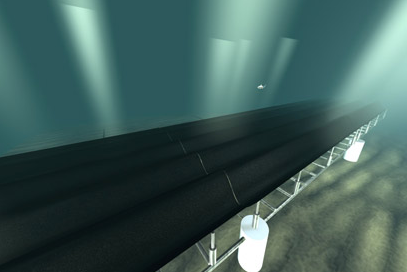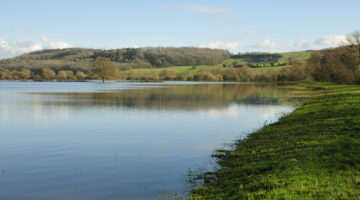
Ever since that first Hawaiian surfed on a length of tree bark, people have recognised the awesome power in waves.
For years, environmental engineers have recognised that the constant oscillations of waves have the potential to supply a huge amount of sustainable energy round the clock, which is something of a rarity with renewable energy, since the majority of forms are intermittent (e.g. solar requiring sunlight to produce power). In fact, if we could harness just a minuscule percentage of the energy from the sea, in the form of wave power, we could make a massive dent in our seemingly insatiable need for fossil fuels.
What makes wave energy even more attractive is that most of the population around the world is distributed around coastlines, therefore by producing power near where the energy is needed, transmission losses become a thing of the past.
It has only been fairly recently that solutions to harness wave energy have come to the fore, however many of these have fallen at the wayside as a result of them being cost prohibitive, largely inefficient or simply because the technologies could not stand up to the rigours of being in salt water 24/7.
That all could be about to change though, with a new wave energy solution developed by a team of engineers from Berkeley University, California.
So what do the Berkeley team say?
A team including, Reza Alam and Marcus Lehmann, have come up with a revolutionary way of tapping the constant 24/7 power of wave energy. Instead of trying to harness the energy from the surface, which has the potential to disrupt shipping, fishing and leisure, they have come up with a renewable energy source based on the sea floor – so no more issues from the nimbys complaining about the visual impact!
Being on the seabed – how does this technology harness energy from waves?
The idea was first thought of when it was realised that patches of muddy ground found off the coastlines of Northern America, reduced the force of waves hitting the shore. The oscillation of the waves would gently push the mud up and down, causing a build up of heat as a result. This turbulence, absorbed by the muddy floor, would be the perfect 24/7 dense form of energy generation.
Double action cylinders hold a carpet, which in its current form is a thin sheet of rubber, although this will no doubt be replaced with a more durable substance as the prototype develpops. These cylinders are then forced up and down by wave energy, leading to a build up of hydraulic pressure. This can then theoretically be passed along the sea floor and onto the shore where it then can be exchanged and transformed into electricity.
How can wave energy make drinking-water more abundant?
Large-scale desalination, the act of obtaining clean drinkable water from saltwater found in the oceans of the world, is a very expensive job due to the energy required to either heat the seawater or pump it through filters. Due to this, many countries are still crippled during periods of draught. However, with the increased potential that the seafloor carpet technology brings, it means that desalination and the quest for clean drinkable water may become highly accessible to coastlines. The energy produced by the new technology can sustainably run large desalination plants, which would provide millions of gallons of fresh, drinkable water to countries that need it.
How effective will the seafloor carpet be?
The Team at Berkeley, suggest that just one square metre can power two homes and just 10m of Californian coastline can provide as much electricity as a whole football, or ‘soccer’ as they say over in the States, field’s worth of Solar Photovoltaic Panels.
With Wind turbines up and down the country, we often hear complaints over why they don’t rotate during periods of high wind velocity. However, with this wave technology, there is no limit to the strength of wave that can be exploited.
When can we see this sustainable wave energy appear?
At present they are in the process of testing indoors. However, Berkeley intends to take it live and test it in the ocean off the coast of California by 2016. If this goes well, then they believe that they can get it ready for commercial use within 10 years…watch this space!
For more information click HERE












No Comments yet! Be the first one.